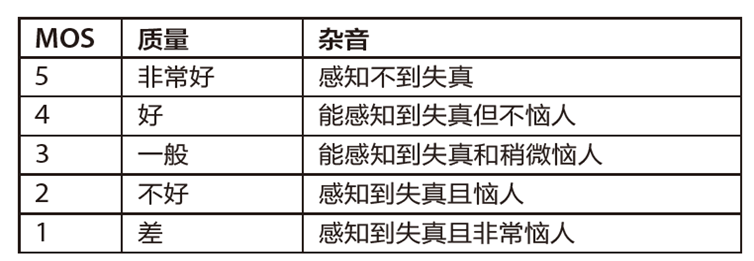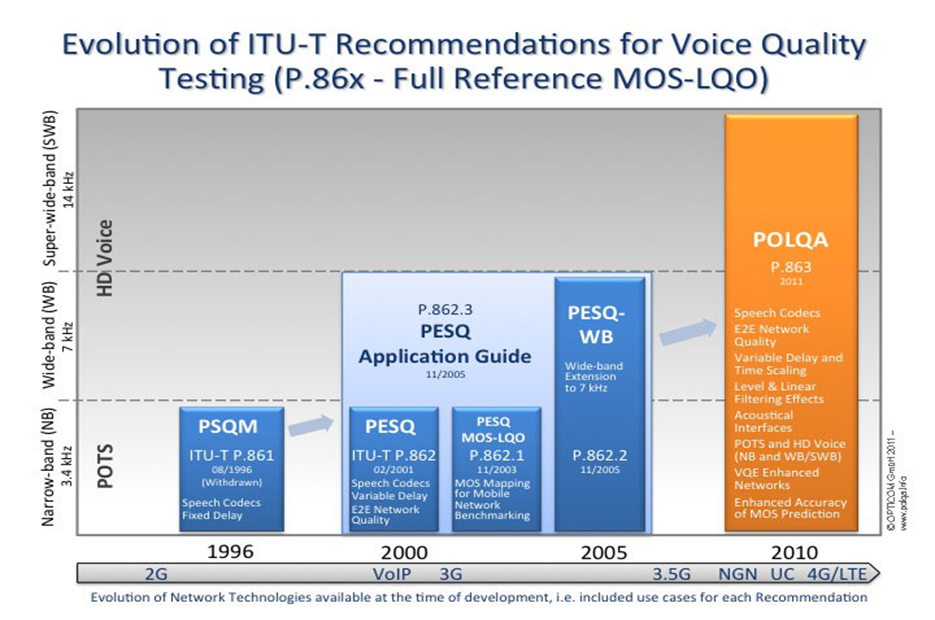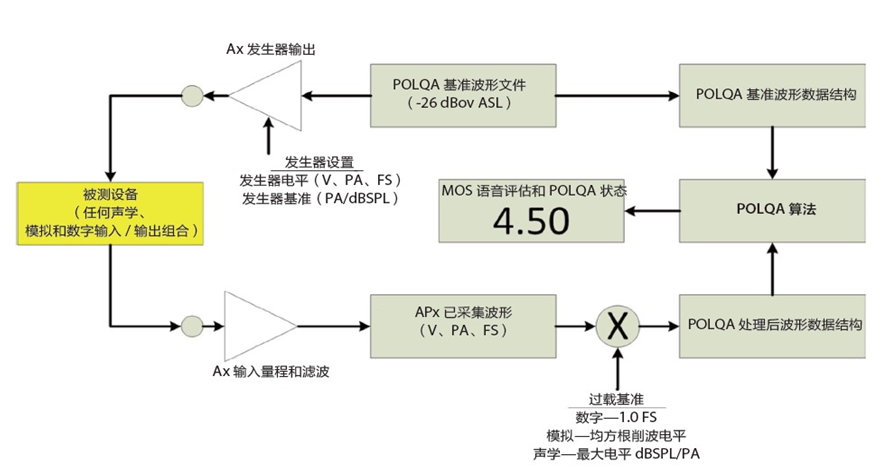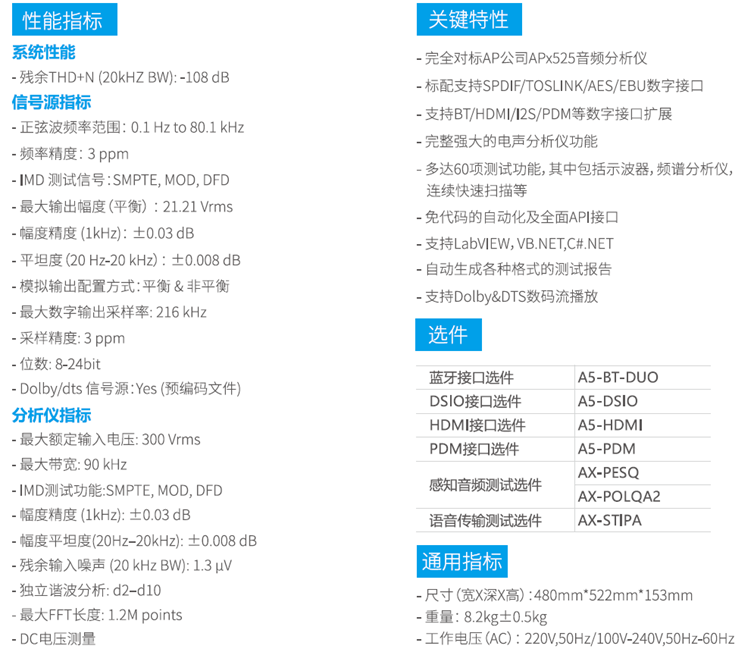1. Introduction
In recent years, the forms and application scenarios of online audio and video products have become increasingly diverse. The pandemic has accelerated the shift of many industries from offline to online operations. With online communication becoming normalized, the application of audio and video technologies has become more widespread. The entry of major players like ZOOM, Tencent, and Alibaba has rapidly elevated the quality in this field. In this competitive landscape, superior audio/video quality and a good user experience are key factors for standing out. Beyond online meetings, in various types of calls, regardless of the terminal device used or the network employed, voice quality remains a critical indicator for assessing call performance.
2. Development History
Shortly after the invention of the telephone, systematically evaluating speech quality became a challenge. On August 30, 1996, ITU-T formally released the P.800: Methods for subjective determination of transmission quality standard. This standard introduced an important metric still widely used today: MOS (Mean Opinion Score), the most prevalent subjective evaluation standard. MOS scores range from 1 to 5, corresponding to Bad, Poor, Fair, Good, and Excellent.

MOS Value Rating Scale
In June 2010, driven by the rapid development and application of new transmission technologies like mobile network VoLTE, VoNR, internet calling software SKYPE (now MS Teams), and advanced codecs, the requirements for voice quality assessment methods increased.
ITU introduced ITU-T P.863, adopting the joint solution POLQA (Perceptual Objective Listening Quality Analysis) from OPTICOM, SwissQual, and TNO as the new-generation voice quality assessment algorithm. The POLQA algorithm supports a variable input signal level range, wider signal bandwidth (from narrowband to super-wideband), and the latest speech coding technologies (Skype, EVS, etc.). It offers higher accuracy for evaluating 3G, 4G/LTE, and VoIP networks and extends support to networks providing HD voice services. The POLQA algorithm's scoring range is 1-5, with 5 being the highest. Current online meetings and calls generally utilize the POLQA algorithm.
3. POLQA Introduction
1)Global Standard: POLQA is the global standard for benchmarking voice quality across fixed, mobile, and IP-based networks. It is used for voice quality analysis in VoIP, HD Voice, 3G, 4G/VoLTE, and 5G networks.
2)Advanced Capabilities: POLQA provides a higher level of benchmark accuracy and adds significant new features for super-wideband (HD) and full-band speech signals. It supports the latest speech codecs and VoIP/VoLTE transmission technologies.
3)Optimization & Monitoring: POLQA is ideally suited for evaluating, optimizing, and monitoring the voice quality of next-generation networks. It delivers a standardized, validated Mean Opinion Score (MOS).

4)Methodology: POLQA generates MOS results without requiring large panels of listeners. Pre-recorded speech samples are passed through the Device Under Test (DUT). The algorithm then compares the degraded audio output with the original reference audio, evaluates the differences, and generates the MOS score.
4. Test Solution
4.1 Implementation Method
For POLQA testing, Doewe Technology's Ax series Audio Analyzers provide full support. The implementation block diagram is as follows:

The signal generation section of the Ax Audio Analyzer sends the POLQA reference test signal to the DUT. The analysis section collects and processes the signal after it passes through the DUT. The instrument then automatically compares and analyzes these two signals (reference and degraded) and outputs the MOS value.
4.2 Test Case
Using Bluetooth headset POLQA testing as an example, the solution is primarily divided into Uplink and Downlink tests:
4.2.1 Downlink Test
Description: The downlink test setup mainly includes the Audio Analyzer main unit, Electroacoustic Test Interface, and Artificial Ear Test Kit.

The Audio Analyzer transmits the test signal to the DUT (headset) via Bluetooth. The Artificial Ear collects the sound played by the DUT. The Electroacoustic Test Interface powers the Artificial Ear and simultaneously transmits the signal collected by the ear to the Audio Analyzer. The Audio Analyzer compares the collected sound with the original test file to perform the POLQA test and outputs the MOS value.
4.2.2 Uplink Test
Description: The uplink test setup mainly includes the Audio Analyzer main unit, Electroacoustic Test Interface, and Artificial Mouth.

The Audio Analyzer sends the test signal to the Electroacoustic Test Interface via coaxial cable. The Electroacoustic Test Interface transmits the Audio Analyzer's test signal to the Artificial Mouth while also powering it. The Artificial Mouth plays the test signal, simulating a human sound field. The DUT's (headset's) microphone collects this signal and transmits it back to the Audio Analyzer via Bluetooth. The Audio Analyzer compares the collected sound with the original test file to perform the POLQA test and outputs the MOS value.
5. Introduction to Core Test Equipment

The A5 Audio Analyzer, marketed by Beijing Doewe Technologies Co., Ltd., is a professional audio analyzer integrating high performance, multiple interface types, and diverse testing functions. It supports a range of test plug-in expansions and various digital audio interfaces (BT/I²S/HDMI/PDM, etc.), making it the preferred test equipment for the R&D stage of consumer audio, automotive electronics, and other AV products.

Welcome to inquire and discuss. Inquiry Tel: 010-64327909.